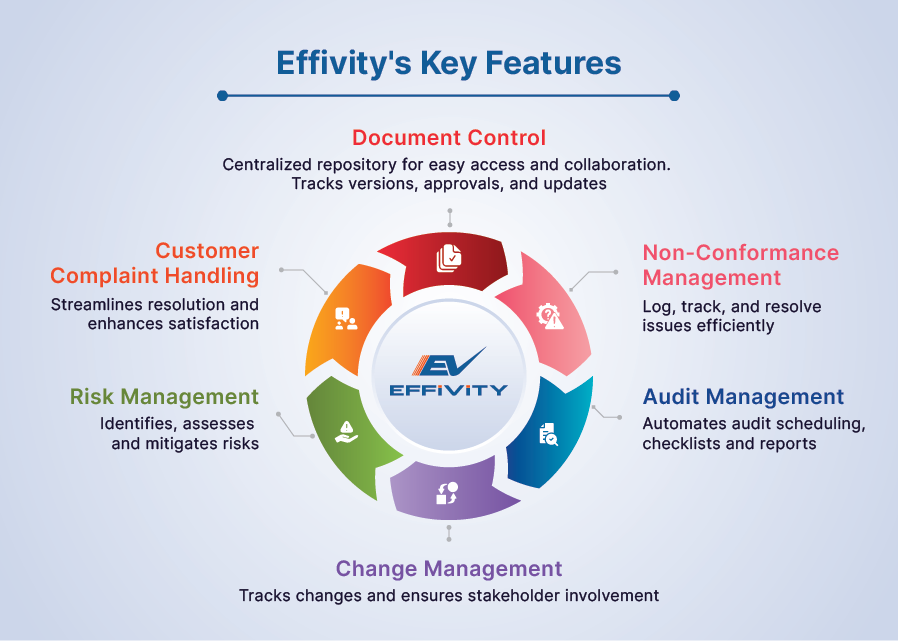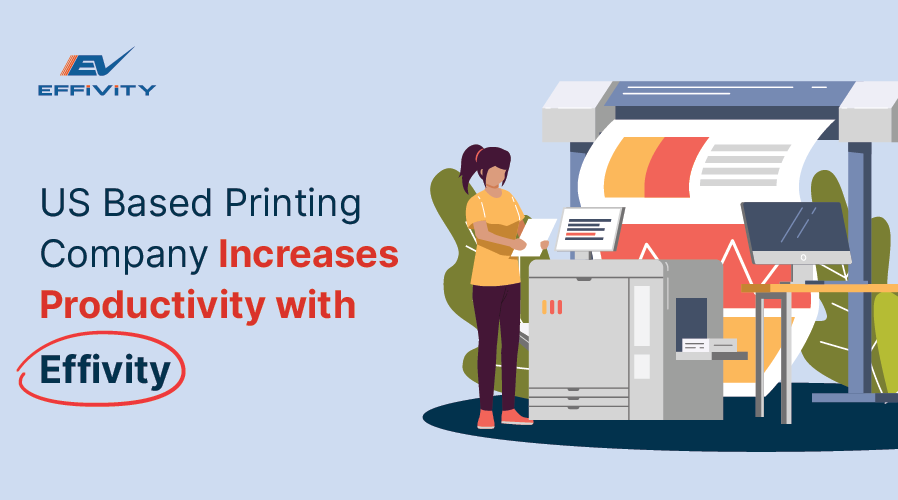The printing industry is very competitive, so staying at the top requires maintaining high-quality standards. Excellence comes from an unwavering commitment to delivering quality and consistently ensuring customer satisfaction.
When it comes to quality ISO 9001:2005 certification is an internationally recognized benchmark that most businesses strive to achieve. The ISO standards provide organizations with a framework for their QMS systems to improve processes and benefit from exceptional efficiency.
In this case study, we look at the success story of one of the largest independently owned print-based companies in the US and how they overcome their challenges in complying with ISO 9001 standards due to the complexities of manual processes with the help of quality management software.
A Quick Overview
Company Background
The subject of our case study is a prominent, independently-owned print-based company from North and South Carolina. They boast a notable presence in the printing industry and have over the years built a lasting reputation for delivering high-quality printing solutions to their diverse clientele.
The services offered by the company span a wide range of printing solutions for corporate communication, printed marketing material, and internal documents. Quality is at the core of their operations and their commitment to excellence has allowed them to continually exceed client expectations.
Challenges Faced
Achieving ISO 9001:2015 certification presented several significant challenges for the company. The stringent processes of the ISO 9001:2015 standard necessitated a quality management system, which proved difficult to manage with their existing manual processes. Here are the specific challenges they encountered:
1. Manual Processes:
Relying on manual processes for compliance management was time-consuming and error-prone. Employees had to manually handle documentation, leading to inconsistencies and delays.
2. Document Management:
The lack of a centralized system made document managementcumbersome and inefficient. It was challenging to ensure that all documents were up-to-date and accessible to relevant personnel.
3. Tracking Non-Conformances:
Managing non-conformances manually posed significant challenges in tracking and remediation. Delays in addressing these issues led to potential risks and non-compliance.
4. Audit Preparations:
Preparing for internal and external audits without automated tools was labor-intensive and stressful. The company struggled to gather and present the necessary documentation efficiently.
5. Process Control and Consistency:
Ensuring consistent process control across all operations was difficult with manual methods. This inconsistency could lead to deviations from the ISO 9001:2015 standard.
6. Time and Cost Implications:
The inefficiencies inherent in manual processes resulted in increased operational costs and wasted time. These factors negatively impacted the company's ability to focus on core business activities.
Effivity's Solution
Effivity is a comprehensive QMS software designed to simplify the complexities of compliance management for various ISO standards, including ISO 9001:2015 certification. Known for its user-friendly interface and wide set of features, Effivity is recognized and validated by prominent ISO certification bodies for its ability to meet stringent quality management requirements.
Effivity stands out due to its ease of implementation and quick adaptability. Companies can deploy the software swiftly without significant downtime or disruption to their operations. The intuitive design guarantees that users can navigate and utilize the system with minimal training.
Key Features of Effivity Utilized
Effivity's extensive range of features provides comprehensive support for all aspects of quality management. Here are the key features utilized by the company:

1. Document Control:
Effivity offers a centralized repository for all quality-related documents, ensuring easy access and collaboration. The system tracks document versions, approvals, and updates, maintaining consistency and control.
2. Non-Conformance Management:
The software facilitates timely investigation and remediation of non-conformances. It allows users to log, track, and resolve issues efficiently, reducing the risk of recurring problems.
3. Audit Management:
Effivity streamlines the audit process by automating audit management, scheduling, checklist creation, and report generation. This feature ensures thorough preparation and smooth execution of both internal and external audits.
4. Change Management:
Managing changes in processes is simple with Effivity. The software tracks all changes and their impact and ensures that all interested parties and key stakeholders are informed and involved in the process.
5. Risk Management:
Effivity helps identify, assess, and mitigate risks effectively. The system supports proactive risk management by providing tools to analyze potential risks and implement corrective actions.
6. Customer Complaint Handling:
The software enhances customer satisfaction by streamlining the complaint resolution process. It logs complaints, tracks their resolution, and ensures timely and effective responses.
Benefits of Using Effivity
The implementation of Effivity brought numerous benefits to the company. Here are some of the most impactful ones:
1. Improved Productivity:
Streamlined business processes and reduced manual effort led to significant productivity gains. Employees could focus on core tasks rather than administrative burdens.
2. Simplified Document Access:
A controlled, collaborative environment for document management ensured that all necessary information was easily accessible. This eliminated delays and improved efficiency.
3. Reduced Redundancies:
Efficient investigation and remediation of non-conformances minimized redundant efforts. The company could address issues promptly, preventing recurrence and saving time.
4. Enhanced Reporting:
Powerful reporting tools enabled quick analysis and informed decision-making. Managers could effortlessly generate detailed reports on compliance status and performance metrics.
5. Automated Notifications and Alerts:
Automated task follow-ups improved responsibility and accountability. Notifications ensured that critical tasks were not overlooked, enhancing overall process management.
6. Tracking Key Performance Indicators:
Continuous improvement was supported by effective tracking of key performance indicators. This ensured that the company could monitor and enhance its quality management practices consistently.
The Bottom Line
The journey to achieving ISO 9001:2015 implementation certification was transformative for this US-based printing company. By addressing their compliance challenges with Effivity, they streamlined processes, reduced costs, and improved efficiency.
Effivity's comprehensive QMS software provided the tools needed for effective compliance management. If your company is facing similar challenges, set up a call with Effivity's experts and start your free trial today to experience the benefits firsthand.
Frequently Asked Questions
What are the key requirements of the ISO 9001:2015 standard?
The ISO 9001:2015 standard requires companies to establish a quality management system that includes a strong customer focus, leadership involvement, a process approach, and continual improvement. It mandates documentation of processes, regular monitoring, and evaluation of performance to ensure quality objectives are met consistently.
How can a company prepare for ISO 9001:2015 certification?
To prepare for ISO 9001:2015 certification, a company should perform a gap analysis to identify areas needing improvement. Implementing a robust QMS, training employees, documenting processes, and conducting internal audits are essential. Engaging with a consultant or using QMS software like Effivity can also streamline the preparation process.
What are the advantages of using QMS software for ISO certification?
QMS software simplifies compliance by automating documentation, tracking non-conformances, and managing audits. It provides a centralized repository for all quality-related documents, ensuring easy access and consistency. Additionally, QMS software enhances reporting capabilities and helps maintain continuous improvement. This makes the certification process more efficient and effective.
How often should a company undergo ISO certification audits?
Companies should undergo internal audits at least annually to ensure continued conformance to the ISO standard. External audits by a certification body are typically conducted every three years, with surveillance audits in between to verify that the quality management system is being maintained effectively.






























